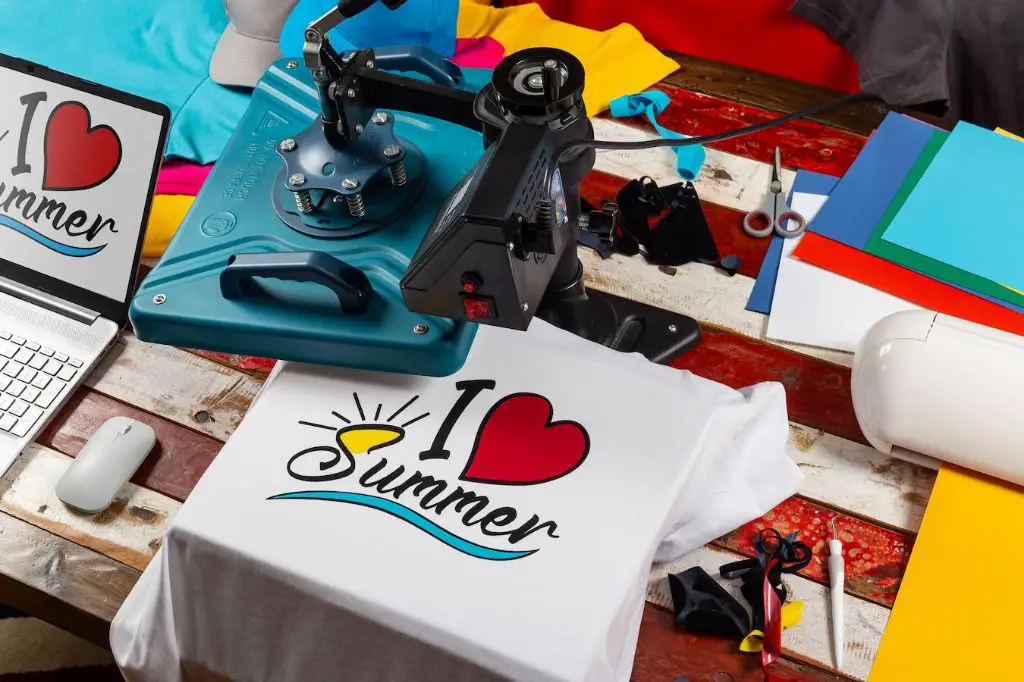What Can I Use Instead Of A Silk Screen?
Silk screening, also known as screen printing, is a printing technique that uses a mesh screen stencil to apply ink onto fabrics, posters, and other materials. It is known for its ability to print bold, graphic designs and patterns. Silk screening has been used commercially and by artists for decades.
While silk screening produces high quality results, it requires specific supplies and equipment that can be expensive and time consuming to set up. As a result, many creators look to alternative printing methods that are simpler and more accessible. Each option has its own pros and cons to consider.
This article will provide an overview of common alternatives to silk screening, comparing the process, results, cost, and applications of each. With this information, creators can determine what option might work best for their specific needs and constraints.
Stencils
Stencils are a popular alternative to silk screening that allow you to create designs on surfaces like fabric, walls, canvas, and more (1). They work by cutting out a design in a material like cardstock, plastic, or metal. The stencil is then placed on the surface and paint, ink, or other media is applied over it. The areas that are cut out create the pattern or design. Stencils are an affordable, accessible option since they only require the stencil material, cutting tools, and paint or ink. They also allow more versatility and creativity since it’s easy to change and recreate designs by cutting new stencils.
Good materials for DIY stencils include cardstock, acetate sheets, mylar, and even thinner metals. Cardstock is often used for simpler stencil shapes that don’t have a lot of detail since it can tear easily. Acetate sheets are transparent plastic that work well for more detailed designs. Mylar is a sturdy polyester film that can be reused many times. Metals like aluminum can be cut for incredibly crisp lines but can be trickier to work with (2). When choosing a stencil material, consider the complexity of the design and number of times you need to reuse the stencil.
References:
(1) https://shellielewis.wordpress.com/2011/10/15/11485052014/
(2) https://www.thecolorfulcookie.com/blog/silk-screen-stencils-materials-and-tools-you-need-to-get-the-job-done
Vinyl
Vinyl or heat transfer material is a popular alternative to silk screening that is easy to use. With vinyl, you can cut designs using a computer-controlled cutting machine like Cricut or Silhouette, then heat press the material onto the garment. This allows small businesses and crafters to create custom t-shirt designs without the setup costs of screen printing.
While vinyl is very easy to work with, it does have some downsides compared to silk screening. The main disadvantage is durability. Screen printed designs tend to last longer and hold up better to washing than vinyl transfers. Vinyl can start cracking or peeling over time with repeated wear and washing. So for short-term uses like event shirts, vinyl is ideal, but for long-lasting apparel, screen printing may be preferable.

There are specialty vinyl materials that offer more durability than standard vinyl. Printable vinyl designed for dark fabrics can mimic the soft handfeel and longevity of screen printing. But overall, screen printing still beats vinyl for maximum durability.
Inkjet Printers
Another alternative to silk screening is using inkjet printers and printable transfer paper. With this method, you can print your design onto special transfer paper using a standard inkjet printer. Then, you heat press the transfer onto the t-shirt or other material.
While this allows you to print full-color designs without setup costs, there are some limitations. Inkjet printers generally do not work well on dark colored fabrics – the transfers will appear faded or transparent. The printed transfers also have a different texture and handfeel compared to direct screen printing. There is a plastic-like layer on top of the ink from the transfer paper. Some people find this uncomfortable to wear.
Inkjet transfer papers only work on natural fabric types like cotton and polyester blends. Printing onto materials like vinyl, leather, or plastics will not work well. The inkjet inks are not durable enough for these applications. So inkjet transfers work best for printing custom t-shirt designs, but may not suit other mediums where durability is critical.
Sources: https://www.printful.com/blog/alternatives-to-screen-printing, https://www.t-shirtforums.com/threads/i-want-my-heat-transfers-to-look-like-silk-screens-what-is-the-solution.891078/
Hand Painting
Hand painting with acrylic or fabric paints is a simple way to customize garments when you only need to make one or a few pieces. This technique involves using paintbrushes to freely hand paint designs directly onto the fabric. Acrylic paint works on natural fabrics like cotton, but specialized fabric paints are best for getting vibrant colors on polyester and stretchy fabrics. Hand painting is great for making one-of-a-kind pieces, adding a personal touch, or creating something wearable for a special event or costume. It allows for lots of creative freedom since you can paint any design by hand. The downside is that it takes time and skill to hand paint designs evenly and accurately, so it’s not practical for mass production.
Embroidery
Embroidery is a popular alternative to screen printing that involves stitching designs into fabrics. According to MidwestStitch, embroidery has some key advantages over screen printing:
Embroidery is great for complex designs with a lot of detail, shading, and color changes. The stitches can create intricate patterns not easily achieved with screen printing. Embroidery also stands out on fabrics like caps and bags.
However, embroidery comes at a higher cost per piece compared to screen printing. Each embroidered item takes time to stitch out individually, while screen printing applies ink to multiple items at once. The setup fees for digitizing embroidery designs can also add to costs.
Overall, embroidery is best for small batch orders where detail and vibrancy matter most. Screen printing tends to be more affordable for high volume orders with simpler designs.
Direct to Garment Printing
Direct to garment (DTG) printing is a method of printing designs directly onto t-shirts, sweatshirts, and other garments. It uses specialized inkjet printers designed for printing on textiles (1). DTG printers have printheads that spray ink directly onto the fabric, allowing for photorealistic prints with no setup costs. The ink bonds chemically with the fibers in the garment for a soft feel and long-lasting print.
Compared to silk screening, DTG printing offers some advantages. The setup costs for screens and emulsion are eliminated since designs can be printed directly from a computer file. This makes it economical for printing small runs or single items. DTG also allows for unlimited colors and photographic image quality that can be difficult with silk screening. Printing is fast, with a typical t-shirt taking 1-3 minutes (2).
However, DTG has some downsides compared to silk screening. The ink can feel slightly stiff and thick on the fabric, especially with 100% cotton shirts. White ink tends to fade faster than prints from silk screens. Oversized graphics or full bleed prints are not possible since the printer has a maximum print area. Lastly, DTG printers have higher upfront costs than screen printing equipment.
(1) https://www.printful.com/blog/dtg-vs-screen-printing
(2) https://printify.com/blog/dtg-vs-screen-printing-what-everyone-needs-to-know/
Sublimation
Sublimation is a printing process that uses heat to transfer dye onto materials like polyester, polymer-coated items, and more. The dyes turn into a gas under high heat, bonding to treated surfaces and creating full-color prints.
Compared to screen printing, sublimation can print full-color designs from edge to edge without leaving a white margin around them. This makes it great for printing all-over graphics on products like t-shirts, mugs, phone cases, and more. The downside is that sublimation only works on specially coated synthetics – it won’t work on natural fabrics like cotton.[1]
Some common materials compatible with sublimation printing include polyester fabrics, hard substrates like mugs and plates with polymer coatings, aluminum panels, and more. The finished products have permanent prints that hold up well to washing and wear. This durability makes sublimation a popular choice for custom merchandise, promotional items like mugs, and signage.[2]
Conclusion
This article covered several popular alternatives that can be used instead of silk screening for printing designs on textiles and garments. We looked at options like stenciling, vinyl transfers, inkjet printing, hand painting, embroidery, direct to garment printing, and dye sublimation.
When selecting an alternative printing method, some key factors to consider are the number of prints needed, color and image quality, hand feel of the final product, setup costs and time investment, and scalability. Stenciling and hand painting give the most artisanal look and feel but are very time consuming and don’t scale well. Vinyl transfers offer bold pops of color but have a plastic-like hand. Digital inkjet printing is great for photographic images but the hand feel is not as soft as screen printing. Embroidery provides beautiful dimensionality and texture but is limited in color options and image types that work well. Direct to garment and dye sublimation printing let you produce high quality, soft handprints in any quantity without screens, but they require specialized equipment.
As you can see, each technique has its own unique set of advantages and limitations. Consider your goals, budget, desired results, and production scale when deciding which option is the best fit for your project and needs.
References
Here are some additional resources on alternative screen printing methods:
The Spruce Crafts. “Easy Ways to Get Your Art onto Fabric.” https://www.thesprucecrafts.com/transfer-art-to-fabric-1106168
Contrado. “The 7 Best Alternatives to Screen Printing for Custom T-Shirts.” https://www.contrado.com/blog/the-7-best-alternatives-to-screen-printing-for-custom-t-shirts/
Printful. “8 T-Shirt Printing Methods: Which One Is Right for You?” https://www.printful.com/custom/printing-methods
Heat Press Nation. “What is Direct to Garment Printing?” https://heatpressnation.com/what-is-dtg-printing/
Sublitech. “What is Sublimation Printing?” https://www.sublitech.com/what-is-sublimation-printing/
Embroidery Library. “Embroidery as an Alternative to Screen Printing.” https://www.embroiderylibrary.com/el/creative_blog/7/909




